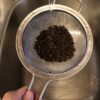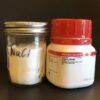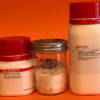Best practices for spices and pepper mills.


Best practices for spices and pepper mills.

While the ingredients in cooked dishes are measured in tens or hundreds of grams per portion, herbs and spices are usually called for in fractions of a gram. While no peer-reviewed data exists, it seems unlikely that studies can maintain reproducability if ordinary ingredients can be measured to a tolerance of +/- 5 grams and […]

Spices are at their most obvious as taste enhancers. No where is this more clearly illustrated than the results of a study that every mother would rank as a near-miracle — spices can induce high school students to like vegetables. This ad-free article is made possible by the financial support of the Center for Research […]

Herbs and Spices have a history of high concentrations of BPA and phthalates. Therefore, even though they are used in small amounts, they can have surprisingly high concentrations. This ad-free article is made possible by the financial support of the Center for Research on Environmental Chemicals in Humans: a 501(c)(3) non-profit. Please consider making a tax-deductible donation for […]

This ad-free article is made possible by the financial support of the Center for Research on Environmental Chemicals in Humans: a 501(c)(3) non-profit. Please consider making a tax-deductible donation for continued biomedical research. Commercially purchased bread has numerous plastic contamination routes in preparation and packaging — some known and probably others unknown. Best kitchen practices, therefore, demand that […]

Use a set of gram weights to see how accurate your electronic scale is. Recognize that most commonly available sets of gram weights will vary in their own accuracy. However, a kitchen setting does not require ultra-precise measurements. This method eliminates wide discrepencies. This ad-free article is made possible by the financial support of the […]

There is no way to make the all-American bacon cheeseburger without bacon. But finding bacon with minimum processing and plastic is very hard. See: “Why It’s Difficult to Find Organic Pork.” When sourcing food like this, we went with organic as the least-bad choice. This ad-free article is made possible by the financial support of […]

Food placed in a glass container at warm or room temperature will continue to evaporate moisture which will condense on the lid. If the lid is plastic (as most are), the condensed water can then be contaminated by contact with the plastic. This ad-free article is made possible by the financial support of the Center […]

There is no standard for the wax coatings used to preserve apples and other fruits and vegetables. Some studies indicate that the coatings are no longer simply carnuba-based, but are undisclosed compounds containing plastic polymers that may trap residues of pesticides and other chemicals. This ad-free article is made possible by the financial support of […]